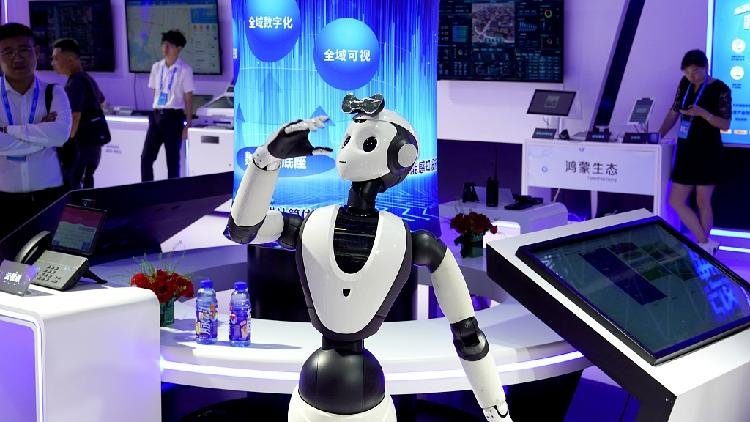China has recently unveiled comprehensive guidelines for the development of humanoid robots, outlining strategic milestones for 2025 and 2027.

China has recently unveiled comprehensive guidelines for the development of humanoid robots, outlining strategic milestones for 2025 and 2027.
The initiative, overseen by the Ministry of Industry and Information Technology (MIIT), is designed to establish a foundational innovation system for humanoid robots by 2025, focusing on breakthroughs in critical technologies related to the “brain, cerebellum, and limbs” of robots.
The ultimate objective is to ensure the secure and efficient production of core components, enabling these robots to attain globally advanced standards and be deployed in specialized operations, manufacturing, and livelihood services scenarios.
Additionally, the plan aims to nurture two to three ecological enterprises with significant global influence, foster a group of specialized small- and medium-sized enterprises, and develop two to three industrial clusters, all while cultivating and advancing innovative business models and forms.
By 2027, China aims to make substantial strides in the technological innovation capacity of humanoid robots, solidify a dependable and secure industrial supply chain, and construct a globally competitive industrial ecosystem.
The industry is expected to undergo accelerated large-scale development, with a greater variety of application scenarios. Consequently, the products in question are anticipated to deeply integrate into the real economy, emerging as a pivotal new driver of economic growth.
Humanoid robots, characterized by their integration of cutting-edge technologies like artificial intelligence (AI), advanced manufacturing, and novel materials, are poised to become the next disruptive innovation following the computer, smartphone, and new energy vehicle.
Recognized for their immense developmental potential and extensive application prospects, they are viewed as a new frontier in future industries, as highlighted by the MIIT.
Despite China’s existing foundation in the sector, the country’s humanoid robot industry lags behind in critical areas such as essential basic components, operating systems, and industrial ecosystem. The issued guidelines aim to bolster policy guidance, pool resources, drive innovation in key technologies, and foster fresh productivity, according to the MIIT.
Wang Peng, an associate research fellow at the Beijing Academy of Social Sciences, lauded the introduction of these guidelines, noting that they will facilitate better integration of research and development resources through a market-oriented approach. He deemed this development a “crucial step in the right direction.”
Prior to the release of these guidelines, various local governments had already unveiled action plans to nurture the growth of the robotics industry, particularly in the realm of humanoid robots.
For instance, Beijing introduced a 2023-2025 action plan dedicated to fostering innovation and development within the industry. This includes the establishment of a 10 billion yuan ($1.4 billion) fund and the creation of a humanoid robot industry innovation center.
Meanwhile, Shenzhen in Guangdong Province aims to propel the development and application of universal embodied intelligent robots, expediting the establishment of a humanoid robot manufacturing innovation center. Similarly, Shanghai plans to construct an international algorithm innovation base to bolster humanoid robot development.
Experts highlight that humanoid robots hold immense potential for scientific and technological innovation and represent a leap forward in high-end manufacturing.
With ongoing breakthroughs in core technologies, these robots are poised to find broad applications in areas ranging from production lines to service roles, and even as household companions in the future.
According to projections from Xinhua, the global humanoid robot market is anticipated to reach 1.9 trillion yuan ($263.9 billion) by 2030, with China accounting for approximately 376.2 billion yuan ($51.4 billion) of that total.